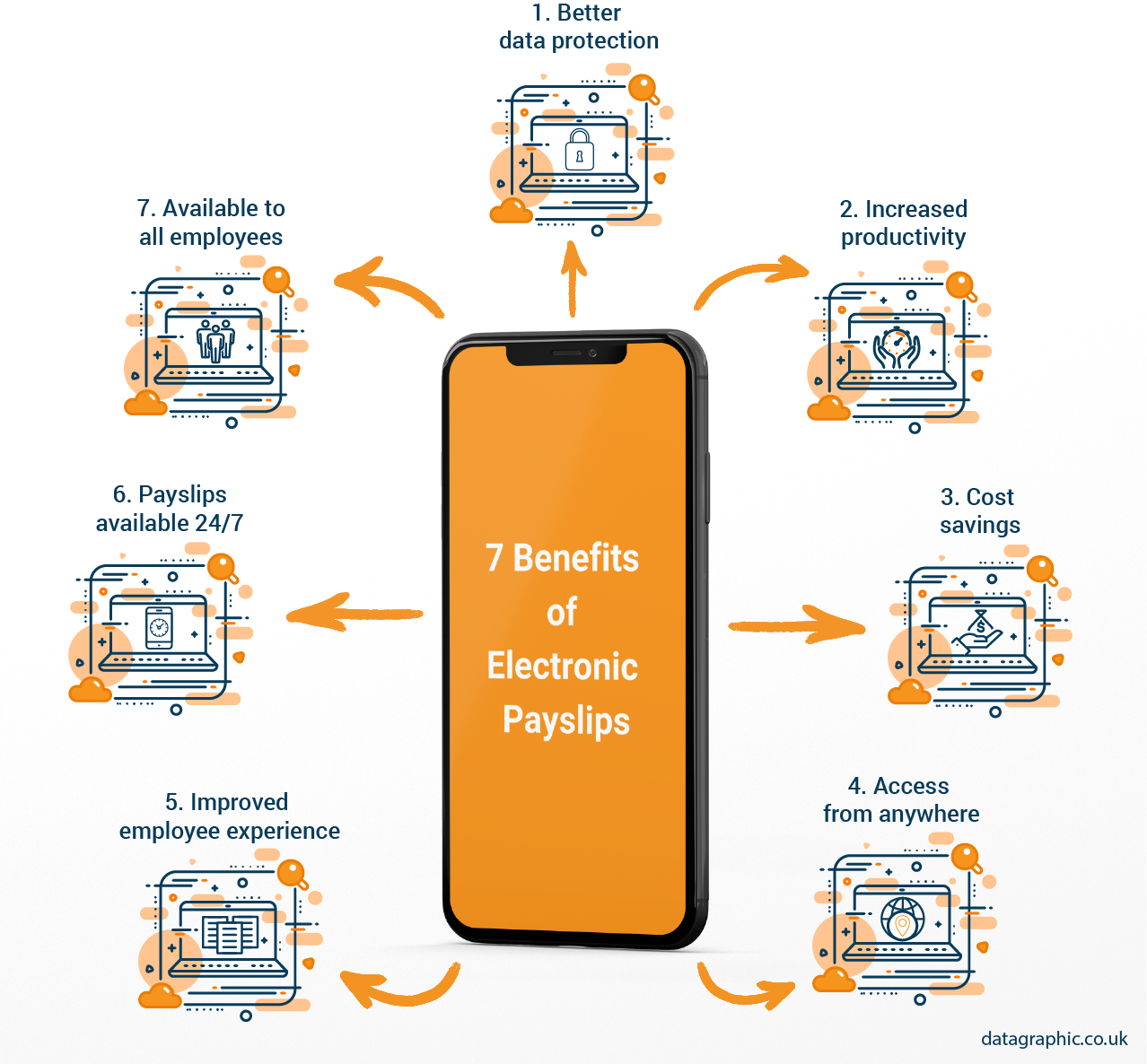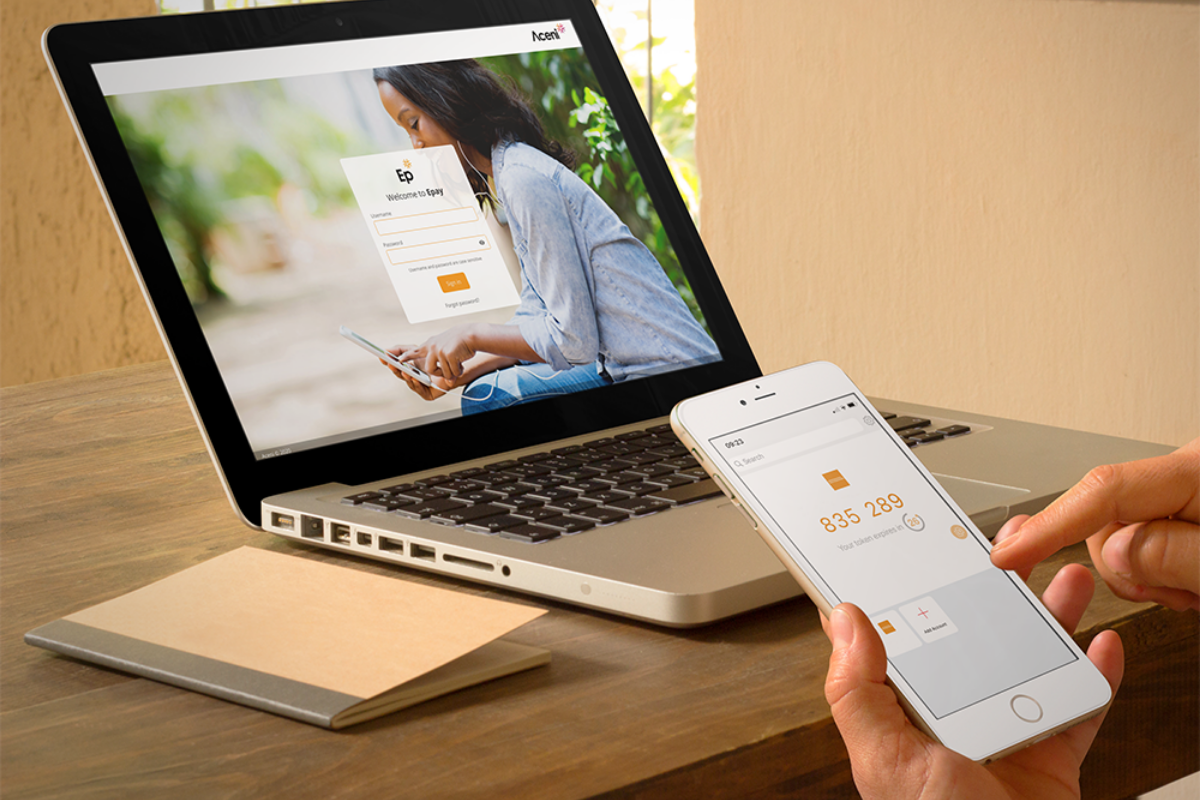Electronic payslips, also known as online payslips and epayslips, are the most common way for employees to receive their payslips. Here, we share the key benefits of delivering electronic payslips for payroll teams that have yet to make the switch.
Traditionally, employees would receive a paper payslip on a weekly or monthly basis, and many still do. However, as technology has evolved and influenced how we communicate, payroll teams have adapted to meet changing employee expectations. Electronic payslips are now very often the standard rather than the exception.
The latest CIPP payslip distribution report found 60% of organisations provide electronic payslips via an online self-service facility (with a further 32% using email, but we’ll come back to that in a moment). The distribution of payslips has undergone a significant shift since the CIPP first began its research in 2008, when only 12% of organisations used an online self-service facility.
60% of organisations provide electronic payslips via an online self-service facility¹
Only a decade ago, electronic payslips were considered a privilege for the select few, offered mainly to office-based employees who had access to a company computer. This made the business case for electronic payslips difficult to justify, as payroll teams wrestled with balancing the cost-benefit: between set-up costs and employee opt-in rates.
But, as technology has advanced, so too have employee expectations. We now see an increasingly digital workforce that wants to receive communications in different ways.
Different ways to deliver electronic payslips
There are many different ways to deliver electronic payslips, for example:
- Company intranet
- Email
- Attachment
- Embedded
- Weblink
- Mobile app
- Online portal (mobile-optimised)
They all have their advantages and disadvantages, but the main differences between these options are accessibility, security and availability.
Whichever way you decide to deliver electronic payslips, please ensure it’s secure. We can’t emphasise this enough. Payslips contain financial and sensitive information that is personal to each employee, and it’s your responsibility to minimise opportunities for personal employee data to be seen by the wrong people or have an impact on someone’s privacy (do we even need to mention the GDPR?!).
This is why it remains surprising to see that 32% of organisations still email payslips to employees, as this method is inherently considered insecure. We’ve written a popular article on this topic, ‘6 Things You Should Know Before Emailing Payslips,’ which we recommend you read before considering email as an option.
So why should you deliver electronic payslips?
As mentioned earlier, payroll teams once found it difficult to justify the cost-benefit of delivering electronic payslips, so they continued to provide paper payslips. The main concern was that not all employees would want to receive an electronic payslip, so the struggle for payroll teams would be managing two different processes: printing paper payslips for the many and hosting online payslips for the few.
However, this should no longer be a concern. Employees now expect the documents you send to be available online (just like they would expect to receive online statements from a bank). Also, switching to electronic payslips doesn’t mean you have to deliver 100% online. It’s essential not to overlook your employees’ preferences. Our motto at Datagraphic is to think ‘digital-first’, not ‘digitally-exclusive’.
Electronic payslips provide a wealth of benefits for payroll teams and employees.
Here we share our seven key benefits of electronic payslips:

- Better data protection: employee data is secure
- Increased productivity: reduce time spent on manual processes
- Cost savings: reduce spending on postage
- Access from anywhere: remote access for payroll teams
- Improved employee experience: all documents in one place
- Payslips available 24/7: anytime, anywhere, from any connected device
- Available to all employees: temporary workers, office staff, remote staff, students and pensioners
Let’s examine these benefits in more detail.
1. Better data protection: employee data is secure

Paper payslips are often printed and posted to employees’ home addresses or manually distributed to them in offices, stores, and depots. There is an element of vulnerability in this delivery method because payslips can get lost, misplaced or distributed to the wrong person.
Electronic payslips provide better data protection because secure solutions require employees to enter information unique to them, such as usernames, passwords, and security questions. This is why we don’t consider email a secure delivery method, because emails can also get lost in transit.
The security and protection of employee data is vital. Does the electronic payslip solution you’re using or considering offer additional data protection, such as a two-level login process, two-factor authentication, and strict administrator access?
2. Increased productivity: reduce time spent on manual processes

Electronic payslips can reduce the time spent on manual and repetitive employee document processes by 98%. The time you’ll be free to use on other important tasks.
H&M save 156 days of administration time a year by delivering electronic payslips instead of paper payslips
Before working with Datagraphic, fashion retailer H&M spent five hours per week in-house printing payslips for their 9,000 employees. Each payroll team member spent an additional three hours separating the multipart payslips and preparing them for dispatch. By delivering electronic payslips using Datagraphic’s payslip portal solution, Epay, they were able to save 156 days of administration time per year. You can read their full success story here.
3. Cost savings: reduce spending on postage

Before introducing Datagraphic’s electronic payslip solution – Epay – the world’s largest services company, Sodexo, used to deliver paper payslips to their UK workforce. The large volume of weekly and monthly paid employees meant providing paper payslips was very costly for Sodexo due to high printing costs and rising postage rates. The payroll team found it very difficult to produce annual budgets as they didn’t know when Royal Mail would increase its postage rates and by how much. After switching to online payslips, Sodexo achieved a rapid return on investment, saving £160,000. Read the full case study here.
Sodexo saved £160,000 annually after switching to electronic payslips
Typically, the preparation and mailing of a paper payslip can cost over £1 per payslip. However, we’ve seen payroll teams reduce that cost by over 80% when delivering electronic payslips. Therefore, the cost savings over a year are substantial. Good electronic payslip solutions use a simple pricing structure, where you pay for the documents you upload, not the number of employees you have (so no employee licence fees!).
4. Access from anywhere: remote access for payroll teams

There are electronic pay slip solutions that allow you and your teams to upload pay data to a secure online portal from anywhere. All you need is a device with an internet connection, providing a more efficient, flexible, and agile way of working.
This remains an important benefit for payroll teams, as most of the UK workforce is still being asked to work from home, where possible. And the need for remote access to payroll software and services is crucial for payroll teams to meet compliance deadlines.
By providing electronic payslips, you can easily and quickly send them on or before payday, regardless of your employees’ location.
5. Improved employee experience: all documents in one place

How many phone calls does your payroll team get asking for copies of payslips? Paper payslips require employees to keep and store copies in a safe place, but they often get misplaced.
Using a secure online portal to deliver electronic payslips means employees no longer have to worry about finding old payslips, as all past and current documents are hosted online in one secure location.
So that’s one less problem for the employee and one less phone call for your team.
Additionally, online portal solutions enable you to provide a single secure location for past and current payslips and other employee documents. For example:
- P60s
- P45s
- P11Ds
- Reward statements
- Company policy documents
- Timesheets
6. Payslips available 24/7: anytime, anywhere, from any connected device

We live in an increasingly connected world, where we expect information to be readily available at our fingertips in seconds. Employees’ expectations have changed; they want to receive the same consumer-grade experiences from their employers, too. They want to access their employee information, including payslips, from anywhere: at work, at home, or on the go. Not only that, but they also want the information to be available to them at any time of the day, too.
Delivering electronic payslips means employees can view their pay information anytime, anywhere, from any connected device. That’s why the electronic payslip solution you choose must have 24/7 availability from any internet-connected device.
7. Available to all employees: temporary workers, office staff, remote staff, students and pensioners

Electronic payslips can be accessed from home, at work, or on the go, allowing you to deliver digital documents to everyone. All they need is a device that is connected to the internet.
To get employee buy-in, you need to be digitally inclusive. Ensure the electronic payslip solution you choose can easily deliver electronic payslips to all your employees, not just those with a company email address or access to your company intranet. This should include temporary workers, remote staff, students and pensioners.
Whilst many employees will prefer the digital experience of receiving electronic payslips, a percentage of your workforce will still need printed documents. But don’t worry. There are solutions available that provide multi-channel payslip delivery. All you need to do is provide one set of payroll data, and then the solution can automatically determine who needs to print and deliver it.
Whether you’re considering using your payroll software or a third-party provider to deliver electronic payslips, make sure they deliver a service that provides the seven key benefits we’ve covered as a minimum:
- Better data protection: employee data is secure
- Increased productivity: reduce time spent on manual processes
- Cost savings: reduce spending on postage
- Access from anywhere: remote access for payroll teams
- Improved employee experience: all documents in one place
- Payslips available 24/7: anytime, anywhere, from any connected device
- Available to all employees: temporary workers, office staff, remote staff, students and pensioners
Datagraphic’s Epay – a secure electronic payslip portal – delivers all the key benefits mentioned above and more. Epay provides employees with quick and easy access to their pay information from any device, at any location, and at any time. What’s more, with the option to automate the printing of documents for employees who can’t access them online, Epay brings with it an unrivalled multi-channel experience for everyone.
Additionally, Epay integrates with data from your existing systems, eliminating the need for lengthy software change projects and capital costs. So you can live in weeks and enjoy Epay’s many features and benefits.
If you’d like to learn more about delivering electronic payslips, please speak to one of our experts, who will be more than happy to discuss options that suit your needs.
References
-
CIPP Payslip Statistics Comparison 2008 – 2019, The Chartered Institute for Payroll Professionals


